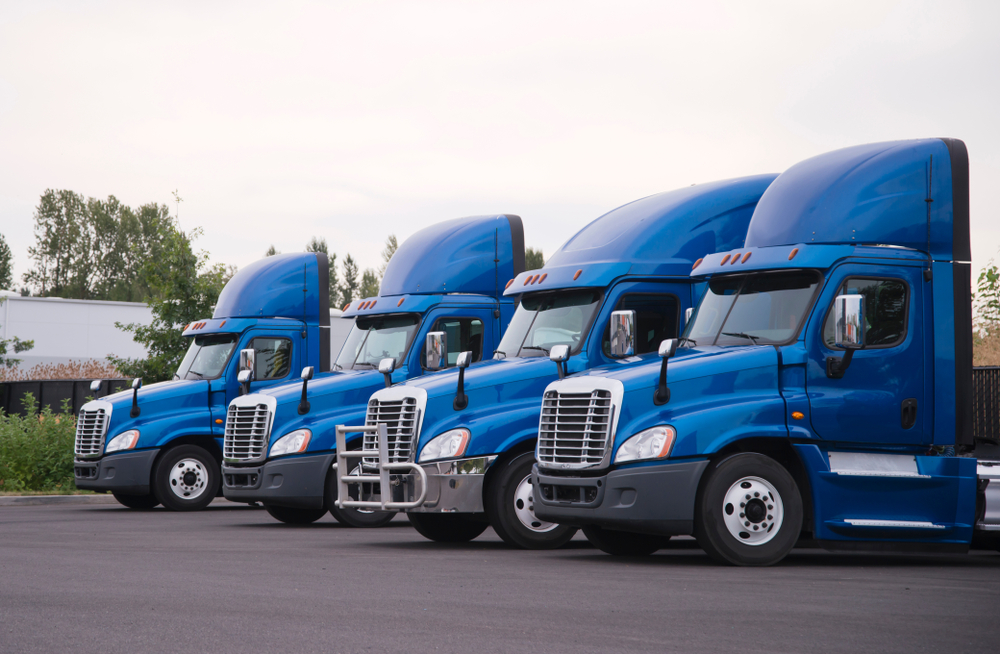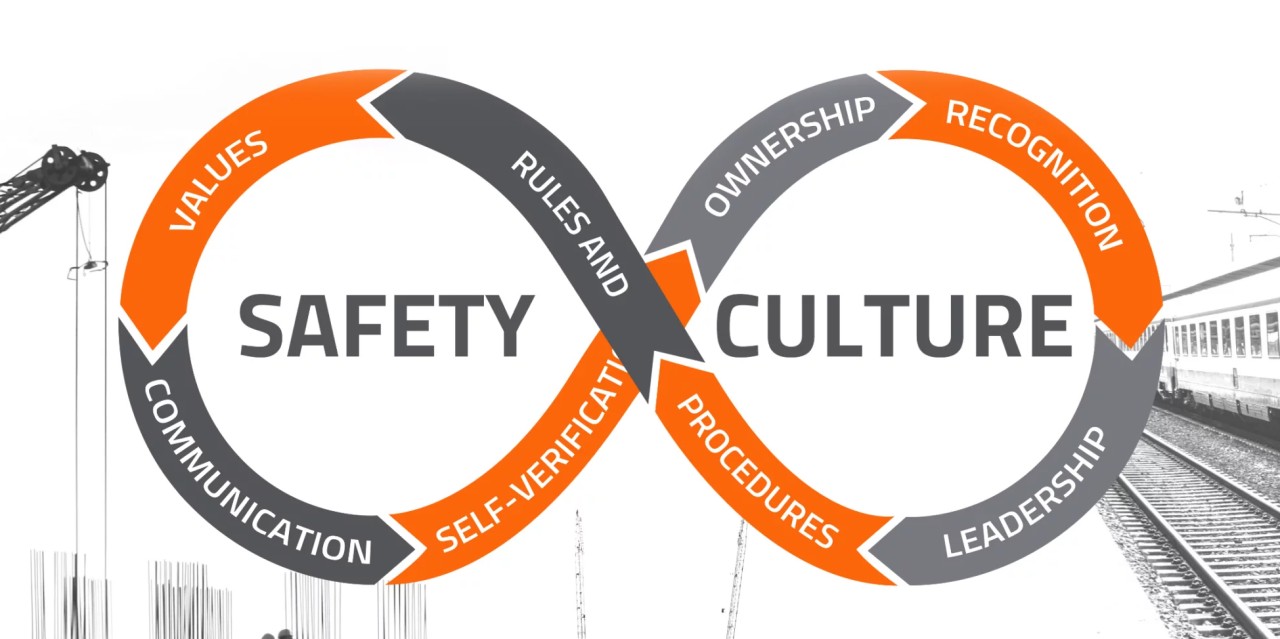
Navigating the path to a fleet safety certification isn’t just about checking boxes; it’s about steering your operations towards excellence and security. This guide lights up the runway with clear, actionable steps for not only understanding the ‘why’, but mastering the ‘how’ of fleet safety certification. Dive into our comprehensive roadmap designed to elevate your fleet’s safety protocols, optimize costs, and ensure that your drivers are not just safe, but thriving under the best standards in the industry.
Table Of Contents
- Understanding Fleet Safety Certification
- Top Fleet Safety Certifications to Consider
- OSHA Fleet Safety Certification
- NAFA Fleet Certification Programs
- NSC Defensive Driving Certification
- NTSI Fleet Safety Courses
- DriveSafe Online Defensive Driving Courses
- Implementing Fleet Safety Technology
- Creating a Safety-First Fleet Culture
- Summary
- Frequently Asked Questions
Key Takeaways
- Fleet safety certification is a comprehensive program enhancing road safety through adherence to policies and thorough training in emergency responses, route optimization, and real-time traffic conditions, aimed at reducing risks and improving fleet management efficiency.
- The certification, although not mandated by state agencies or the DOT, is strategic for businesses, providing education on safe driving, reducing collisions, cutting accident-associated costs, leading to improved fleet management, and potentially reducing insurance costs.
- Implementing fleet safety technology such as telematics, dash cams, GPS, and real-time alerts can significantly improve fleet efficiency, driver behavior, compliance with safety regulations, and aid in the development of a safety-first fleet culture through better data analysis and feedback.
Understanding Fleet Safety Certification

Fleet safety certification is very much like a seal of approval. It verifies that comprehensive road safety measures are in place for drivers and personnel. But it doesn’t stop there. Certification also ensures:
- adherence to safety policies
- taking into account economic and regulatory perspectives
- safeguarding against liabilities
- improving employee satisfaction
It’s the total package, offering a 360-degree approach to ensuring fleet safety.
To acquire this coveted certification, fleets must undergo thorough training both in and out of the classroom, followed by passing relevant testing. The training and testing cover vital aspects like emergency response preparation, route optimization, and providing real-time traffic conditions, equipping fleets with the tools to enhance both safety and efficiency.
What is Fleet Safety Certification?
Fleet safety certification is designed to train commercial vehicle drivers to prevent accidents, mitigate risks and liabilities, and improve driver and vehicle performance. It’s not a one-size-fits-all approach; instead, it’s tailored to suit the unique needs of your fleet. To obtain this certification, individuals must complete fleet safety training courses on defensive driving and fleet safety education, as well as participate in fleet safety training programs, and successfully pass any required tests.
These certification courses are designed for fleet managers, safety officers, and trainers who are responsible for fleet operations. Organizations such as the National Association of Fleet Administrators (NAFA) and DriveSafe Online offer courses and certifications covering topics from driver training to accident prevention. While these certification courses are not mandated by the Department of Transportation (DOT) or state agencies, they are an essential part of fleet safety and management.
Why Get Certified?
Obtaining a fleet safety certification isn’t just about adding another achievement to your organization’s resume. It’s a strategic move that can bring tangible benefits to your business. For one, it enables managers to establish effective safety policies and design driver training programs, ultimately facilitating quick response contingency plans. By taking the necessary steps to become fleet safety certified, your organization will be better equipped to handle potential risks and challenges.
But the benefits don’t stop there. Certification also:
- Educates owners on safe driving behaviors
- Minimizes the occurrence of collisions
- Avoids incidental costs associated with accidents
- Leads to an improved management of the fleet
- Reduces insurance costs.
With the integration of modern fleet safety technology, companies can align driver behavior with benchmarks related to safety, fuel use, and maintenance costs, leading to enhanced efficiency. Plus, technologies such as dash cams with GPS in fleet vehicles aid in documenting road events objectively, which is crucial for managing accidents, processing insurance claims, and promoting responsible driving.
Top Fleet Safety Certifications to Consider

Now that we understand the importance of fleet safety certification, let’s explore some of the popular options available. The world of fleet safety certifications is vast and varied, with courses catering to different needs within the fleet management industry. Whether you’re a novice fleet manager looking to get your feet wet or an experienced professional seeking advanced knowledge, there’s a certification course that’s just right for you.
From the comprehensive offerings of NAFA to the practical wisdom of the National Association of Fleet Administrators, there’s a course for every need. There are also specialized fleet safety certification programs offered by NATMI, aimed at safety directors, maintenance managers, commercial drivers, and trainers, culminating with an onsite examination post-training to earn the certification. Alternatively, you can consider the DriveSafe Online Defensive Driving Courses, which emphasize various safety techniques and typically require about four to six hours to complete.
OSHA Fleet Safety Certification
The OSHA Fleet Safety Certification, focusing on occupational safety, stands tall among fleet safety certification options. This certification concentrates on managing safety policy aspects in various situations, aiming to reduce liability and business costs associated with fleet management.
Think of it as a crash course in all things safety-related. This safety training certification provides an in-depth overview of legal issues, including company liability and driver qualification standards, as well as guidance on preventive measures and cost-effective transport solutions. It’s a comprehensive program that covers all bases, making it an excellent choice for fleets looking to elevate their safety standards.
NAFA Fleet Certification Programs
The National Association of Fleet Administrators (NAFA) offers several different fleet certifications, providing a comprehensive approach to fleet safety. The Certified Automotive Fleet Manager certification, for instance, requires completion of eight distinct modules over a three-year period, encompassing more than 160 hours of training.
But what if you want to specialize in a particular area of fleet management? NAFA has got you covered. Certification in individual modules from the Certified Automotive Fleet Manager program is possible, allowing for specialized focus areas within fleet management. It’s a flexible and adaptive approach that caters to the unique needs of every fleet management professional.
NSC Defensive Driving Certification
Next on our list is the National Safety Council (NSC) Defensive Driving Certification. This certification focuses on imparting basic safety guidelines and best practices to reduce driving incidents. It’s a hands-on, practical approach that emphasizes a well-rounded understanding of safety practices both on and off the road for defensive driving.
What sets the NSC certification apart is its state-specific approach. NSC’s defensive driving courses are specially designed online and in-person for each state, taking into account the state-specific rules of the road. It’s a localized approach that ensures you’re well-versed with the rules and regulations unique to your area of operation.
NTSI Fleet Safety Courses
The National Traffic Safety Institute (NTSI) offers an array of fleet safety certification programs, including the Safer Driver Challenge, specialized courses for high-profile and utility vehicles, as well as safe driving in harsh weather conditions, and a comprehensive driver training program.
What sets NTSI apart is its flexibility. The training provided by NTSI can be tailored to fleet needs, available through both on-site and online formats. These courses cover topics vital for fleet drivers, such as operating dangers, and the skills required for improving safety and efficiency on the road.
By fostering deep subject matter expertise, NTSI certifications promote decision-making skills crucial for safe driving.
DriveSafe Online Defensive Driving Courses
Last but not least, we have the DriveSafe Online Defensive Driving Courses. These internet-based courses are tailored to enhance driving safety. They provide drivers with crucial knowledge on managing fatigue and distractions, as well as critical skills for identifying and mitigating risks before they lead to incidents.
But it’s not just about learning; it’s also about application. An objective of the DriveSafe Online Certification is to establish necessary safety protocols that help in minimizing accidents and contribute towards lowering insurance premiums. Plus, with a completion time of approximately one hour, it’s a concise yet comprehensive educational resource for drivers.
Implementing Fleet Safety Technology

In this era of rapid technological advancement, fleet safety is no exception. Implementing fleet safety technology can lead to benefits such as improved fleet efficiency, reduction in fuel expenses, decreased vehicle breakdowns, and efficient handling of administrative tasks.
One of the key technologies integral to fleet safety is telematics. This technology provides real-time data on vehicle location, driver habits, and fuel economy. Coupled with fleet management software like CalAmp, these technologies can advance safety protocols by enabling detailed analysis of driver performance and fuel efficiency, along with predictive maintenance scheduling and monitoring idle times.
Monitoring Tools: Dash Cams, GPS, and Telematics
Monitoring tools like dash cams, GPS, and telematics are the eyes and ears of your fleet. These tools gather data that facilitates informed decision-making within fleet operations. But it’s not just about data gathering; it’s also about analysis. Safety analytics can pinpoint the impacts on CSA scores and detect potential violations, directly improving compliance with road laws.
By tracking and analyzing safe driving habits through telematics, fleet managers can appropriately reward good driver behavior, fostering a culture of safety within the organization.
Improving Driver Behavior with Real-Time Alerts and Coaching
Driver behavior is a critical component of fleet safety. And one of the best ways to improve driver behavior is through real-time alerts and coaching. Driver behavior monitoring systems provide real-time alerts by using GPS data to compare the vehicle’s speed against actual speed limits and record the duration of speed infractions.
Fleet managers can use dashboards and scorecards for tracking driver performance metrics, which helps in identifying and addressing issues with driving behavior. Additionally, telematics data and video footage are utilized to coach drivers on safer driving practices, aiding in the reduction of incidents and providing tangible evidence for feedback.
Not only does this improve driving behavior, but it also promotes a collaborative environment where drivers actively watch out for one another’s safety, fostering a strong collective safety culture within the fleet.
Compliance, Safety, and Accountability (CSA) Scores
Let’s not forget compliance and safety requirements. Fleet safety compliance involves adhering to regulations from bodies like OSHA, DOT, and FMCSA, which collectively contribute to a fleet’s CSA scores.
Adhering to these guidelines is essential to ensure safe operating conditions for fleet drivers and plays a critical role in a fleet’s compliance score. Non-compliance with regulations like ELD mandates results in penalties, fines, and lower CSA scores, emphasizing the necessity for strict adherence to fleet safety regulations.
Creating a Safety-First Fleet Culture

Creating a safety-first fleet culture is the cornerstone of a successful fleet safety program. This culture is not created overnight; it requires a concerted effort involving:
- Communication
- Training
- Mentorship
- Technology
- Rewards
Safety programs that encapsulate training, mentorship, the use of technology, and rewards are integral to reinforcing the fleet safety culture. More than just a set of rules, a safety-first culture promotes a collaborative environment where drivers actively watch out for one another’s safety. By establishing clear written safety policies and expectations, a robust safety culture is fostered that not only promotes safe driving but also reduces driver turnover.
Setting Specific Goals and Tracking Progress
Setting specific goals and tracking progress is a fundamental part of creating a safety-first fleet culture. These goals help to identify areas for improvement and establish realistic targets to enhance fleet safety performance.
A structured plan for fleet safety certification, which lays out a clear path with milestones and priorities, ensures the fleet’s progress towards safety goals. Monitoring tools gather essential data that can be analyzed to track fuel usage, distances traveled, idling time, and driving behaviors for comprehensive vehicle and driver performance assessments.
A robust fleet safety program, which includes driver training and provides regular performance feedback, can mitigate accidents, foster a strong safety culture, and contribute to a lower turnover rate.
Establishing Consistent Safety Workflows
Establishing consistent safety workflows is another essential aspect of creating a safety-first culture. This involves recording best practices in a master document for consistent application and referencing of safety protocols.
Additionally, setting up a scoring system to objectively measure and address risky driving behaviors is crucial. One-on-one training sessions can be conducted for drivers whose performance drops below the established safety score threshold, ensuring that all drivers adhere to the same safety standards.
Integrated fleet dash cams can provide valuable video footage for reviewing driver performance and enhancing the quality of training sessions.
Incentivizing Safe Driving with Gamification and Rewards
Incentives play a key role in encouraging safe driving behaviors among fleet drivers. Gamification and performance rewards are recommended strategies to foster a safety-minded culture within the organization.
Performance rewards for drivers may include:
- Bonuses
- Plaques
- Special privileges
- Company gear
- Gift cards
By consistently implementing these incentivization tactics, a safety-minded culture within the organization can be fostered after becoming fleet safety certified. Reward systems that acknowledge safe driving practices contribute to a positive work environment, which is an integral part of supporting fleet safety programs.
Summary
It’s clear that fleet safety certification is a crucial part of running a successful fleet management operation. From training drivers and implementing safety technology to fostering a safety-first culture, there are many steps to creating a fleet that is not just compliant, but truly safe. As we’ve seen, there are many certification programs available, each with its unique focus and benefits.
In conclusion, remember that fleet safety isn’t a destination but a journey. It requires continuous effort, learning, and adaptation. With the right mindset and resources, you can create a fleet that is not only safe but also efficient, reliable, and successful. Because at the end of the day, safety isn’t just about avoiding accidents; it’s about protecting your most valuable asset – your people.
Frequently Asked Questions
What is fleet safety certification?
Fleet safety certification is a program designed to train commercial vehicle drivers in accident prevention, risk mitigation, and overall improvement of driver and vehicle performance.
Why should I get fleet safety certified?
Getting fleet safety certified is essential because it allows managers to establish safety policies, design driver training programs, and minimize accidents and costs.
Which fleet safety certification program should I choose?
The best fleet safety certification program for you depends on your specific needs and preferences. Consider options such as OSHA, NAFA, NSC, NTSI, and DriveSafe Online.
How can fleet safety technology help my fleet?
Fleet safety technology can help your fleet by reducing fuel expenses, decreasing vehicle breakdowns, and efficiently handling administrative tasks. This can lead to overall cost savings and improved operational efficiency.
How can I create a safety-first fleet culture?
Creating a safety-first fleet culture involves communication, training, mentorship, technology, rewards, setting specific goals, and tracking progress. These elements are key to promoting a culture of safety within your fleet.

